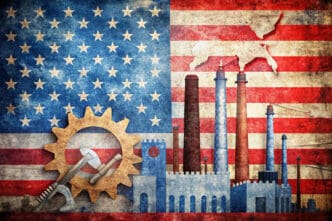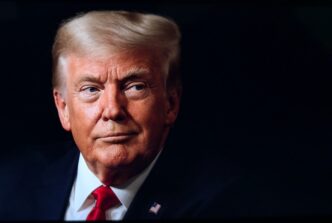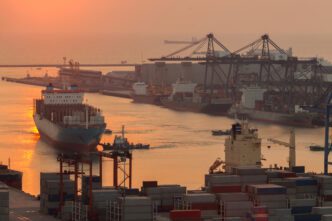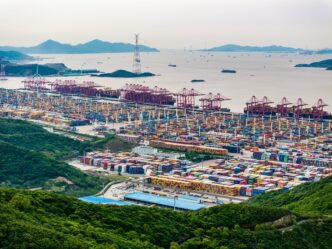The United States is grappling with the economic implications of attempting to rejuvenate its manufacturing sector. This push for reindustrialization, driven by calls for protectionist measures such as tariffs, aims to revive domestic manufacturing and curb trade deficits. However, the strategy involves significant economic tradeoffs and faces constraints due to the tight labor market and high costs of retraining workers.
Proponents of reindustrialization argue that tariffs will help create jobs by protecting American manufacturers from foreign competition. This approach is particularly appealing to regions like the Rust Belt, historically known for their strong manufacturing base but which have seen substantial industrial decline over the past century. Despite these arguments, critics highlight the economic challenges of shifting labor from high-productivity sectors to manufacturing, a move that could stifle overall economic growth.
The U.S. labor market is currently operating near full capacity, with unemployment rates hovering around 4 percent. This situation implies that new manufacturing jobs would necessitate pulling workers from other sectors, which may offer higher value-added contributions to the economy. Moreover, this reallocation is complicated by the fact that workers are not easily transferable between industries. For example, a financial advisor cannot readily transition to a manufacturing role without incurring significant retraining costs, which are often prohibitive.
Automation and robotics emerge as potential solutions to these labor constraints. Companies involved in U.S. manufacturing, particularly in sectors like electric vehicles and semiconductors, are increasingly relying on automated processes rather than human labor. However, this reliance on technology raises questions about the potential for meaningful job creation in the manufacturing sector.
President Donald Trump’s administration has maintained a cautious stance on immigration, which further complicates the labor dynamics of a manufacturing revival. Immigrants often fill both low- and high-skill positions in the U.S. economy, but restrictive immigration policies limit the labor pool available for new manufacturing roles.
Furthermore, the economic costs of reindustrialization extend to consumers. Tariffs and protectionist policies tend to increase the prices of domestically manufactured goods. For instance, a washing machine that costs $1,000 when imported might increase to $1,200 if produced domestically, forcing consumers to pay more for the same product. This price hike reduces consumer purchasing power, as the extra money spent on a single product cannot be used elsewhere in the economy.
The discussion also revisits the notion that trade deficits signify economic weakness, a view rooted in outdated economic theories. Modern trade theory suggests that deficits and surpluses merely reflect specialization and capital flows, rather than a country’s economic health. Attempting to eliminate trade deficits, akin to a household striving to produce all its needs instead of engaging in beneficial trade, would not enhance economic welfare.
Despite these challenges, President Trump continues to advocate for policies that aim to bolster American manufacturing, emphasizing sectors like automobiles, shipbuilding, and technology. However, the administration has not clarified whether these efforts will involve significant human labor or primarily leverage automation.
The potential persistence of high tariffs, despite their questionable benefits for employment, underscores the complexity of the reindustrialization debate. While President Trump’s policies focus on revitalizing domestic manufacturing, the economic realities suggest that the strategy requires careful consideration of the costs and benefits involved.








